Welcome to our blog on Greenhouse Pests and Disease Management – your ultimate guide to controlling, preventing, and treating the challenges faced in greenhouses. In this article, we will provide simple and easy-to-read data backed by accurate information to help you tackle these issues effectively.
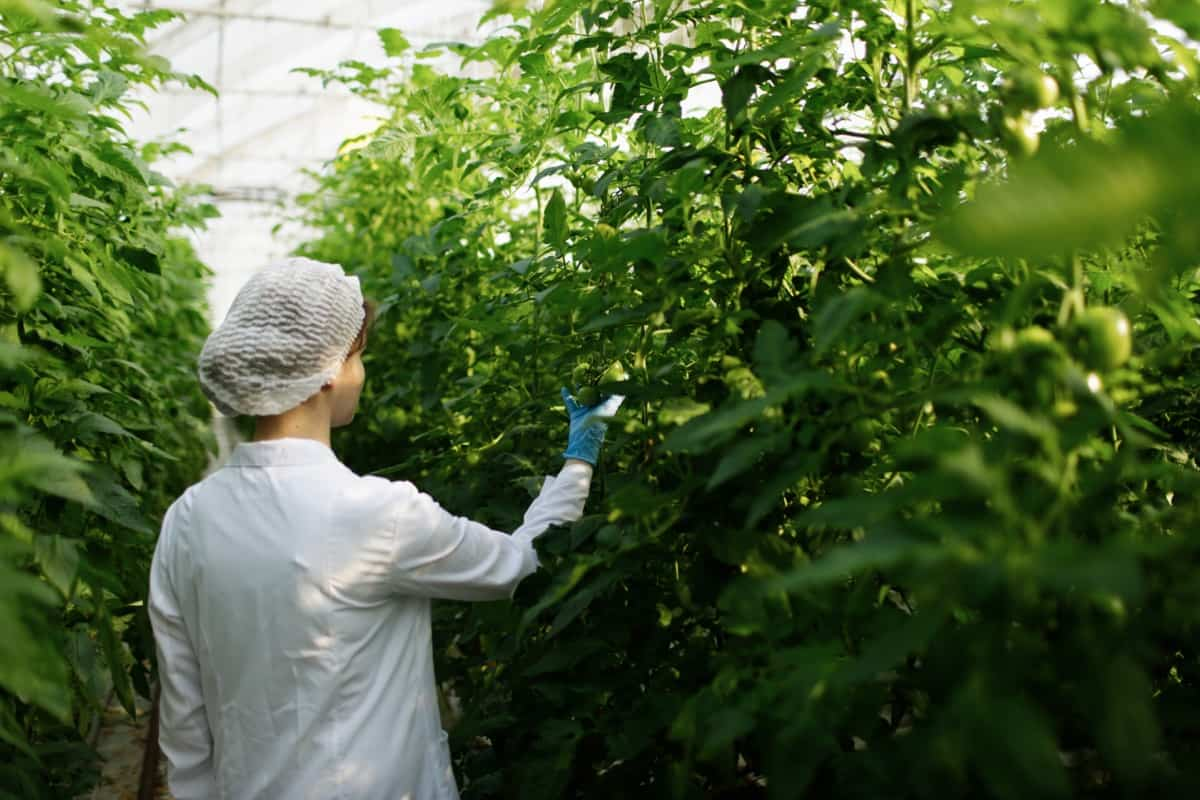
Greenhouses are vulnerable to various pests and diseases that can harm crops and hinder productivity. Understanding how to manage these threats is crucial for successful greenhouse operations. We’ll delve into practical methods, organic solutions, and cutting-edge treatments to safeguard crops and boost their health.
Management of Greenhouse Pests and Diseases
Common Greenhouse Diseases: Ways to Control Diseases
Good sanitation practices, monitoring humidity and temperature, proper ventilation, and regular cleaning of surfaces help reduce the risk of disease transmission. Watering plants from their bases or crowns prevents water splashing, and regular cleaning of surfaces discourages spore germination. Providing ample space promotes better airflow, reducing the risk of disease development. Common greenhouse diseases like fungal infections thrive in overly wet conditions, and treatments can be achieved with neem oil and improved airflow.
Bacterial diseases, like bacterial blight and erwinia, are incurable and should be removed immediately. Virus infections, often carried by plant-feeding insects, require removal to prevent further spread. Monitoring insects, installing screens, and removing diseased plants are vital to controlling viral diseases. Implementing these measures will protect greenhouse crops and maintain a healthy growing environment.
Common Greenhouse Insect Pests: Ways to Control Insects
Common pests in a greenhouse include sap-feeding insects (aphids, mealybugs, scale insects, and mites), pollen feeders (thrips and small flies), and defoliators (caterpillars and slugs). Sap-feeding insects cause damage through feeding and excreting honeydew, leading to yellowing and distortion of leaves. Thrips spread pollen while leaving black fecal specks on flowers. Small flies are nuisances, with larvae feeding on over-watered plant roots.
Caterpillars and slugs consume young plants, causing chewed or skeletonized leaves. Regular monitoring using sticky cards helps detect pest presence early. Insecticidal soaps are effective against aphids, mealybugs, mites, whiteflies, and thrips. Neem oil can control scale insects. Bacillus thuringiensis targets tiny flies larvae in the soil. Hand-picking caterpillars and slugs is a manual control method. Prompt action is vital as caterpillars and slugs can cause severe damage rapidly.
In case you missed it: From Deserts to Harvests: Greenhouse Farming in Saudi Arabia
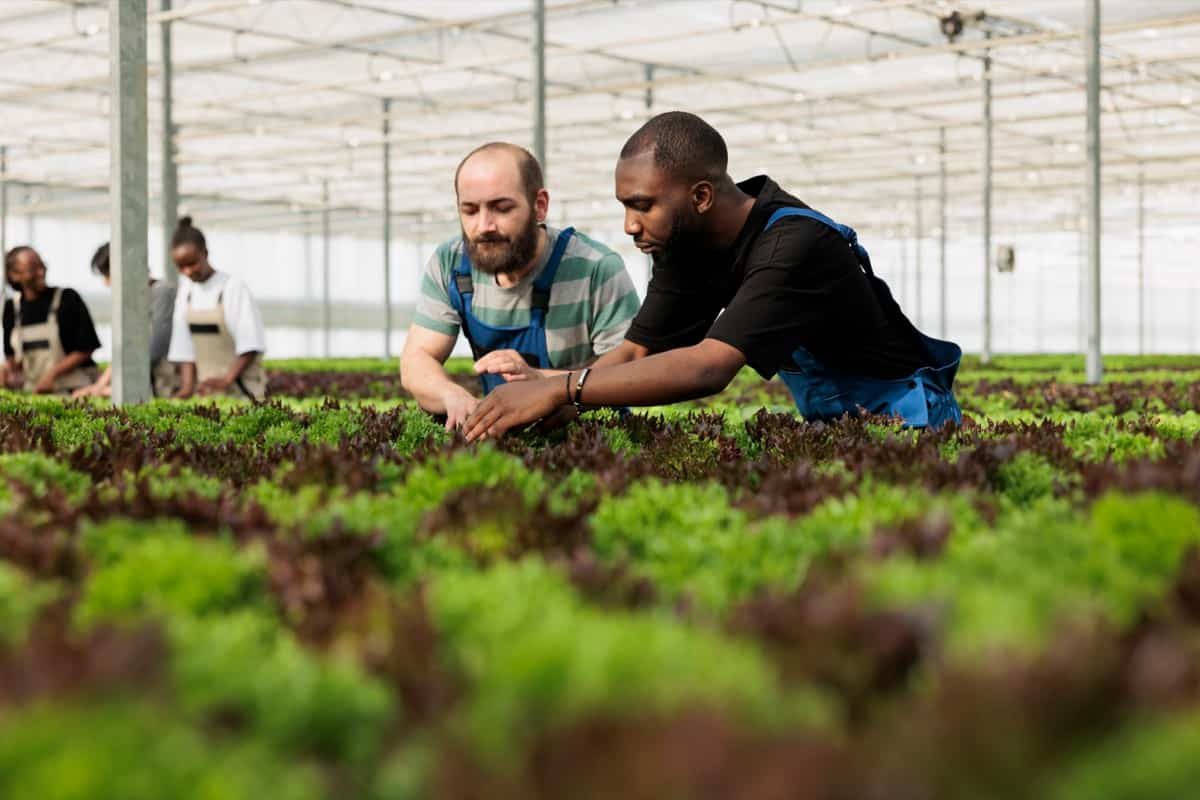
Integrated Pest and Disease Control in Greenhouse Crops
- Integrated Pest and Disease Management (IPDM) is a holistic approach to effectively tackling greenhouse pests and diseases while minimizing environmental impact. Combining preventive measures, cultural practices, and targeted treatments, IPDM offers sustainable solutions for growers.
- It involves identifying common greenhouse diseases, such as powdery mildew, and implementing appropriate control measures. Timely intervention through biological control agents, like beneficial insects, can also help combat greenhouse insect pests like aphids and whiteflies. Disease-resistant plant varieties are valuable assets in the IPDM arsenal.
- Regular sanitation practices, such as cleaning tools and removing plant debris, reduce disease outbreaks. Early detection and monitoring are essential for timely action against emerging threats like spider mites and thrips.
- In organic pest control methods, neem oil and insecticidal soaps are popular. Additionally, fungicide treatments with low environmental impact can be applied judiciously for disease management.
Cultural Methods for Greenhouse Pest and Disease Management
Cultural methods are preventive measures used in greenhouse pest and disease management. These practices create unfavorable conditions for pests and diseases, reducing the need for chemical interventions. Proper sanitation involves cleaning tools, equipment, and greenhouse structures to minimize disease spread.
Crop rotation helps disrupt pest and pathogen lifecycles, limiting their buildup in the soil. Introducing beneficial insects, like predatory mites, maintains a balanced ecosystem and controls pest populations. Proper spacing between plants improves airflow, reducing disease-friendly humidity levels. Additionally, selecting disease-resistant plant varieties provides a natural defense against pathogens.
Importance of Greenhouse Pest Management
Uncontrolled pest infestations can lead to severe economic losses and compromised yields. Pests can damage plants directly by feeding on them or indirectly by transmitting diseases. Effective pest management ensures that crops are not susceptible to infestations and diseases.
Integrated Pest and Disease Management (IPDM) approaches, combining various strategies, offer sustainable solutions while minimizing environmental impacts. Greenhouse growers can maintain healthy crops and achieve optimal yields by employing preventive measures, biological controls, and targeted treatments.
Organic Pest Control Methods in Greenhouses
Organic pest control methods offer environmentally friendly alternatives to manage greenhouse pests without relying on synthetic chemicals. Neem oil, derived from the neem tree, acts as a natural insecticide and disrupts the pest’s lifecycle. Insecticidal soaps from plant-derived fatty acids effectively control soft-bodied pests like aphids and mites.
In case you missed it: Greenhouse Chrysanthemum Farming Cost and Profitability Analysis
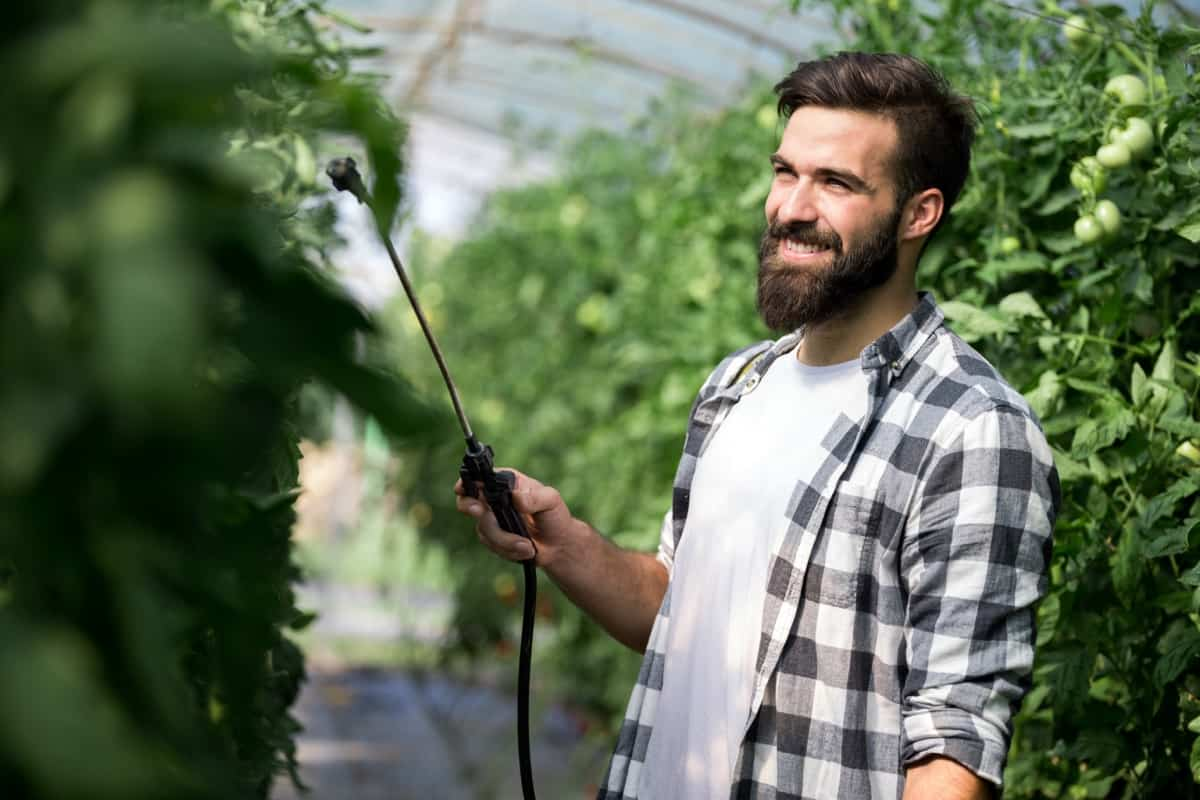
Beneficial insects, such as ladybugs and lacewings, serve as natural predators, preying on harmful pests and maintaining a balanced ecosystem. Physical barriers like row covers and sticky traps offer non-toxic pest control solutions.
Biological Control Agents for Greenhouse Pests
Biological control agents in managing greenhouse pests sustainably. Beneficial insects, like parasitic wasps, ladybugs, and predatory mites, act as natural predators, feeding on harmful pests and preventing infestations. They provide long-term solutions and are compatible with Integrated Pest and Disease Management (IPDM) approaches. Beneficial nematodes attack and control soil-dwelling pests like root aphids.
Entomopathogenic fungi, like Beauveria bassiana, infect and kill insects while sparing non-target organisms. Trichogramma wasps effectively target and control pest eggs. These biological control agents offer growers an eco-friendly and effective way to combat greenhouse pests, reducing the reliance on chemical pesticides and supporting sustainable agricultural practices.
Preventing and Managing Aphid Infestations in Greenhouses
Aphids are common greenhouse pests that can reproduce rapidly and cause significant damage to crops. Preventing aphid infestations starts with implementing good greenhouse management practices. Regularly inspecting new plant acquisitions helps detect and isolate infestations early.
Maintaining proper greenhouse hygiene and removing plant debris minimize aphid hiding spots. Introducing natural predators, like ladybugs and lacewings, provides a biological control approach. Using reflective mulches can deter aphids from landing on plants. In severe infestations, insecticidal soaps or neem oil can be applied, especially on the undersides of leaves where aphids often cluster.
Controlling Whitefly Populations in Greenhouse Environments
Whiteflies are persistent greenhouse pests that can quickly multiply and damage crops through feeding and transmitting diseases. Effective control strategies involve disrupting their lifecycle. Introducing biological control agents, like parasitic wasps and predatory mites, helps keep whitefly populations in check.
Reflective mulches and sticky traps are used to repel and trap adult whiteflies. Yellow sticky cards effectively monitor their presence and help in assessing infestation levels. Additionally, using insecticidal soaps or neem oil can provide targeted treatment against whiteflies. Ensuring proper greenhouse ventilation and avoiding over-fertilization prevent conditions favorable for whitefly development.
Fungicide Treatments for Greenhouse Diseases
Fungicides are essential tools in managing greenhouse diseases caused by fungal pathogens. Preventive application of fungicides helps protect plants from potential infections. Curative fungicides can be used after disease symptoms are observed to stop further spread. Copper-based fungicides effectively control various fungal diseases. Systemic fungicides, like triazoles, are absorbed by the plant and provide long-lasting protection.
In case you missed it: Ultimate Guide to Greenhouse Irrigation and Water Management
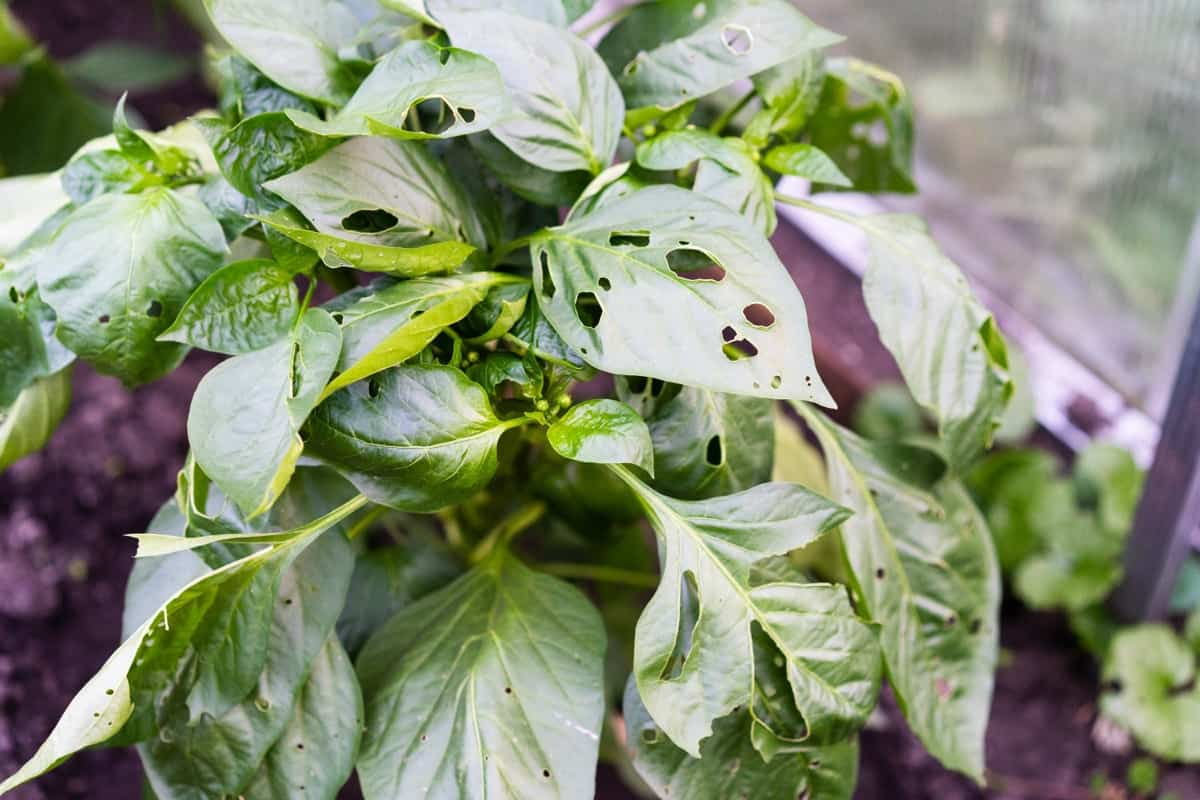
Some biological fungicides, such as Bacillus subtilis, offer eco-friendly alternatives. Proper application timing and following label instructions are crucial for effective fungicide use while minimizing environmental impact. Regularly rotating fungicides with different modes of action prevent resistance development in pathogens. By implementing responsible fungicide treatments, greenhouse growers can effectively manage diseases.
Managing Powdery Mildew in Greenhouse Crops
Powdery mildew is a common fungus disease that affects a wide range of greenhouse crops. A white, powdery-like substance on the plant’s surface is a characteristic symptom. Preventive measures play a critical role in managing powdery mildew. Ensuring adequate spacing between plants for proper airflow reduces humidity and discourages disease development.
Applying fungicides preventively, especially during periods of high humidity, helps control powdery mildew. Some cultural practices, like avoiding overhead irrigation and reducing leaf wetness, are also effective in managing the disease. Regularly inspecting plants and promptly removing any infected ones limit disease spread.
Effective Strategies for Controlling Spider Mites in Greenhouses
Spider mites are small pests that can cause significant damage to greenhouse crops by piercing and sucking plant cells. Integrated approaches are effective in controlling these pests. Introducing predatory mites, like Phytoseiulus persimilis, helps keep spider mite populations in check. Properly managing greenhouse humidity and avoiding excessive drought stress prevent mite outbreaks.
Regularly inspecting plants for the first signs of infestation allows for timely intervention. Insecticidal soaps and neem oil can target spider mites while sparing beneficial insects. Reflective mulches and physical barriers help deter mite infestations.
Preventing and Treating Botrytis Blight in Greenhouse Plants
Botrytis blight, or gray mold, is a common fungal disease affecting greenhouse crops, causing decay and wilting. Prevention is the key to managing Botrytis blight effectively. Proper greenhouse ventilation reduces humidity levels, limiting favorable conditions for disease development.
Avoiding excessive plant crowding ensures adequate airflow, reducing the risk of Botrytis outbreaks. Removing and disposing of infected plant material promptly prevents disease spread. Applying preventive fungicides, especially during periods of high humidity, provides additional protection. Fungicides containing active ingredients like iprodione or boscalid are effective against Botrytis.
Nematode Control Methods for Greenhouse Crops
Nematodes are microscopic worms that can damage greenhouse crops, especially their roots. Implementing preventive measures like nematode control. Using nematode-resistant plant varieties offers natural protection. Solarization, a practice of covering the soil with transparent plastic to trap heat, can kill nematodes and their eggs.
Introducing beneficial nematodes, like Heterorhabditis bacteriophora, can control soil-dwelling nematodes. Soil drenches with botanical extracts, like neem oil, offer organic nematode control options. Crop rotation with non-host plants helps break the nematode lifecycle. Regularly monitoring soil health and nematode populations allows growers to assess the effectiveness of their control methods.
In case you missed it: Rice Cultivation in Greenhouse: A Profitable Business Plan for Sustainable Farming
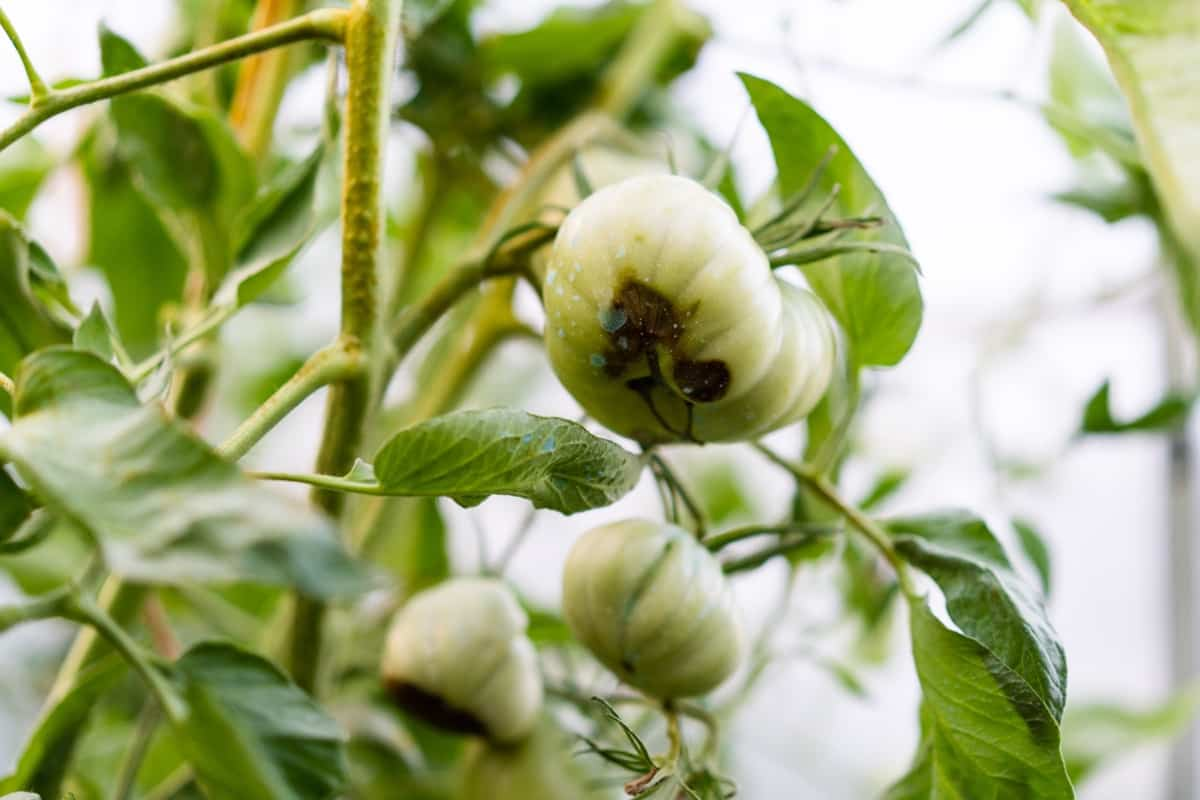
Managing Thrips Infestations in Controlled Environments
Thrips are challenging pests to control in greenhouses, as their small size and rapid reproduction make them difficult to manage. Preventive measures are essential in thrips management. Introducing predatory insects, like minute pirate bugs and predatory mites, provides biological control. Yellow sticky traps effectively monitor thrip populations and help assess infestation levels.
Physical barriers like mesh screens prevent thrips from entering the greenhouse. Regularly inspecting plants for thrip damage and the presence of thrips is crucial for early detection. Applying insecticidal soaps or neem oil can provide targeted treatments against thrips. Properly disposing of infested plant material prevents thrip spread.
Controlling Scale Insects in Greenhouse Settings
Scale insects can significantly threaten greenhouse crops, as they feed on plant sap and weaken the plants. Prevention is key to controlling scale insects. Introducing natural predators, like ladybugs and parasitic wasps, provides biological control. Sticky traps can be used to monitor adult-scale insect populations.
Inspecting plants regularly for scale presence allows for timely intervention. Applying horticultural oils or insecticidal soaps can effectively control scale insects. Isolating and removing infested plants limit the spread of scale infestations. Like cleaning tools and equipment, proper greenhouse sanitation prevents scale insect contamination.
Disease-resistant Plant Varieties for Greenhouse Cultivation
Choosing disease-resistant plant varieties is an essential component of proactive greenhouse disease management. Breeding and selection processes have led to the development of plant varieties with natural resistance to specific diseases. These resistant varieties exhibit reduced susceptibility to infections, limiting disease spread in the greenhouse. For instance, tomato varieties resist fungal diseases like Fusarium and Verticillium wilt. Similarly, some cucumber varieties display resistance to powdery mildew.
Sanitation Practices to Prevent Greenhouse Disease Outbreaks
Maintaining excellent sanitation practices is critical in preventing greenhouse disease outbreaks. Regularly cleaning and disinfecting greenhouse structures, tools, and equipment help eliminate disease-causing pathogens. Removing and disposing of any infected plant material promptly prevents the spread of diseases.
Isolating new plant acquisitions allows growers to detect and contain potential infections before they spread. Proper waste disposal and recycling practices prevent disease carryover. Maintaining clean walkways and benches reduces disease transmission. Incorporating hygiene protocols and training staff on disease prevention further, enhance greenhouse sanitation.
Monitoring and Early Detection of Greenhouse Pests and Diseases
Monitoring and early detection are important components of an effective Integrated Pest and Disease Management (IPDM) program in greenhouses. Regularly inspecting plants for signs of pests and diseases allows growers to take timely action against emerging threats. Sticky traps and pheromone traps are useful tools for monitoring flying insects.
Scouting for pests, like aphids and mites, involves examining plant leaves and stems. Early detection of diseases, like powdery mildew or Botrytis, enables growers to apply appropriate treatments promptly. Implementing an effective monitoring system helps greenhouse growers stay ahead of potential pest and disease outbreaks, ensuring healthier and more productive crops.
In case you missed it: How to Start Greenhouse Farming in Turkey: Crops, Subsidy, and Loans
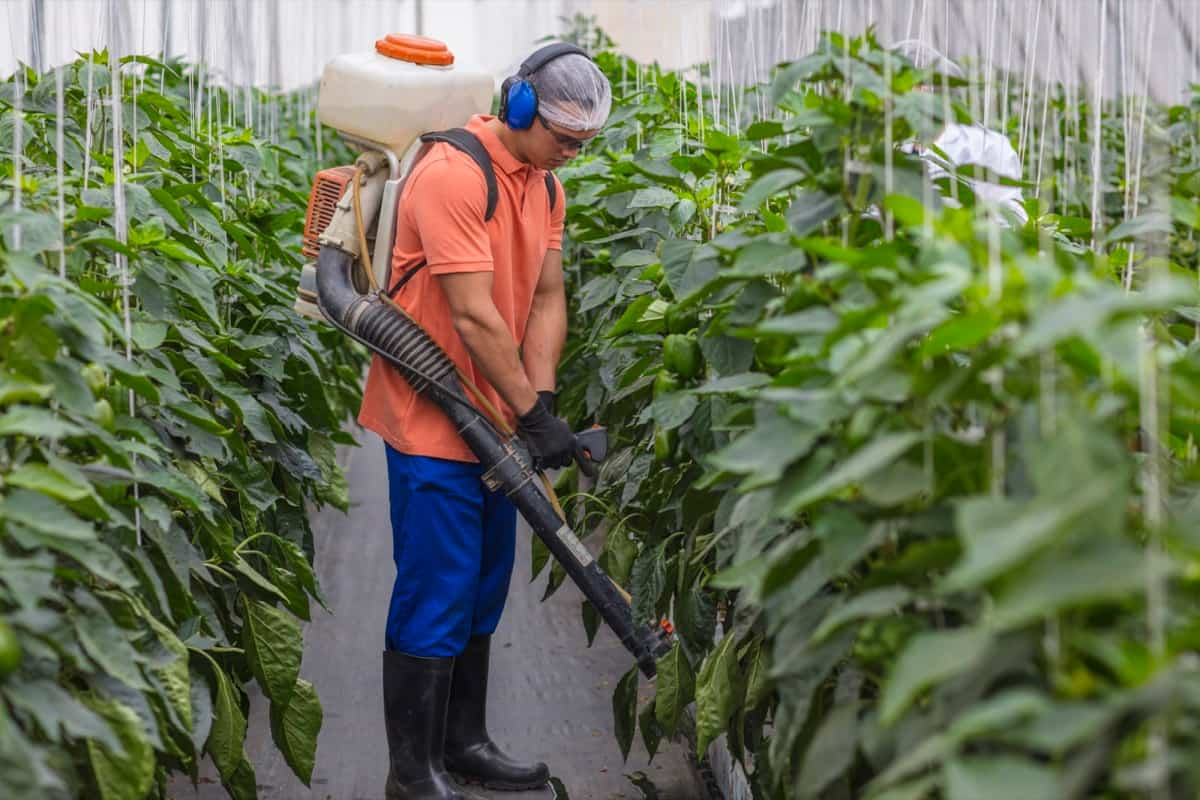
Conclusion
Proactive greenhouse pest and disease management through integrated approaches, good sanitation, regular monitoring, and timely treatments are essential for safeguarding crops, ensuring a thriving greenhouse environment, and minimizing economic losses.
- Types of Pesticides Used in Agriculture: A Beginner’s Guide
- Economical Aquaculture: A Guide to Low-Budget Fish Farming
- 15 Common Planting Errors That Can Doom Your Fruit Trees
- How to Make Houseplants Bushy: Effective Tips and Ideas
- Innovative Strategies for Boosting Coconut Pollination and Yield
- Pollination Strategies for Maximum Pumpkin Yield
- The Complete Guide to Chicken Fattening: Strategies for Maximum Growth
- Natural Solutions for Tulip Problems: 100% Effective Remedies for Leaf and Bulb-Related Issues
- Revolutionizing Citrus Preservation: Towards a Healthier, Greener Future
- Natural Solutions for Peony Leaf and Flower Problems: 100% Effective Remedies
- Maximizing Profits with Avocado Contract Farming in India: A Comprehensive Guide
- Natural Solutions for Hydrangea Problems: 100% Effective Remedies for Leaf and Flowers
- The Ultimate Guide to Choosing the Perfect Foliage Friend: Bringing Life Indoors
- From Sunlight to Sustainability: 15 Ways to Use Solar Technology in Agriculture
- The Ultimate Guide to Dong Tao Chicken: Exploring from History to Raising
- The Eco-Friendly Makeover: How to Convert Your Unused Swimming Pool into a Fish Pond
- Mastering the Art of Delaware Chicken Farming: Essentials for Healthy Backyard Flocks
- 20 Best Homemade Fertilizers for Money Plant: DIY Recipes and Application Methods
- How to Craft a Comprehensive Free-Range Chicken Farming Business Plan
- Brighten Your Flock: Raising Easter Egger Chickens for Beauty and Bounty
- How to Optimize Your Poultry Egg Farm Business Plan with These Strategies
- Subsidy for Spirulina Cultivation: How Indian Government Schemes Encouraging Spirulina Farmers
- Ultimate Guide to Raising Dominique Chickens: Breeding, Feeding, Egg-Production, and Care
- Mastering the Art of Raising Jersey Giant Chickens: Care, Feeding, and More
- Ultimate Guide to Raising Legbar Chickens: Breeding, Farming Practices, Diet, Egg-Production
- How to Raise Welsummer Chickens: A Comprehensive Guide for Beginners
- How to Protect Indoor Plants in Winter: A Comprehensive Guide
- Ultimate Guide to Grow Bag Gardening: Tips, Tricks, and Planting Ideas for Urban Gardeners
- Guide to Lotus Cultivation: How to Propagate, Plant, Grow, Care, Cost, and Profit
- Agriculture Drone Subsidy Scheme: Government Kisan Subsidy, License, and How to Apply Online
- Ultimate Guide to Raising Araucana Chickens: Breed Profile, Farming Economics, Diet, and Care
- Bringing Hydroponics to Classroom: Importance, Benefits of Learning for School Students
- Ultimate Guide to Raising Polish Chickens: Breed Profile, Farming Economics, Diet, and Care
- Ultimate Guide to Raising Australorp Chickens: Profile, Farming Economics, Egg Production, Diet, and Care
- Silkie Chicken Farming: Raising Practices, Varieties, Egg Production, Diet, and Care
- Sussex Chicken Farming: Raising Practices, Varieties, Egg Production, Diet and Care